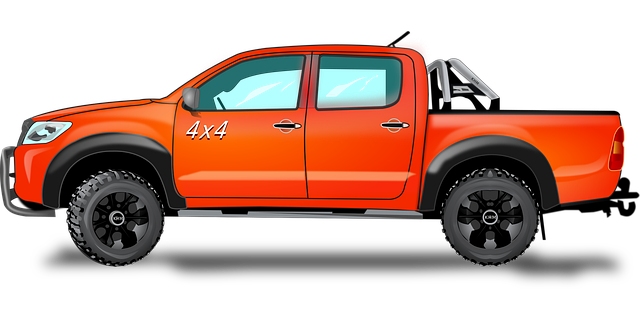Receiver hitches are vital components for 4×4 adventures, enabling secure towing of trailers or camper vans. When selecting a hitch, consider weight capacity, size, and material strength. The RGV Overland 4×4-Repair service ensures optimal hitch performance through inspections, repairs, and realignments. Regular maintenance, including checks for wear, corrosion, and misalignment, prevents hazards and enhances off-road reliability. Installing a new hitch using RGV Overland techniques improves towing abilities, while consistent upkeep ensures long-lasting, safe use for off-road adventures.
“Enhancing your vehicle’s towing capabilities starts with understanding receiver hitches. This essential attachment point allows you to securely tow trailers and accessories, making it a cornerstone of off-road and outdoor adventures. In this comprehensive guide, we explore the role of RGV Overland 4×4-Repair in optimizing receiver hitch functionality. From identifying common issues to providing a step-by-step installation guide, learn how to maintain and upgrade your receiver hitch for long-lasting performance using specialized RGV Overland 4×4-repair techniques.”
- Understanding Receiver Hitches: A Basic Overview
- The Role of RGV Overland 4×4-Repair in Enhancing Receiver Hitch Functionality
- Common Issues with Receiver Hitches and How to Spot Them
- Step-by-Step Guide: Installing a New Receiver Hitch Using RGV Overland 4×4-Repair Techniques
- Maintenance Tips for Longevity: Keeping Your Receiver Hitch in Top Shape
Understanding Receiver Hitches: A Basic Overview

Receiver hitches are a crucial component for anyone involved in overlanding or 4×4 adventures. These hitches serve as the connection point between your vehicle and various towing accessories, such as trailers, camper vans, or even storage boxes. Understanding how they work is essential when planning an off-road trip or engaging in rgv (overland) 4×4 repairs.
A receiver hitch consists of a metal tube mounted to the back of your vehicle, which securely holds the towing accessory in place. It features a ball mount that connects to the hitch’s opening on the trailer or accessory. This simple yet robust system allows for easy attachment and detachment, making it convenient for those who frequently transport different gear. When choosing a receiver hitch, factors like weight capacity, size compatibility with your vehicle, and material strength are key considerations for safe and reliable 4×4 repairs.
The Role of RGV Overland 4×4-Repair in Enhancing Receiver Hitch Functionality

Receiver hitches are an essential component for towing and hauling, providing a secure attachment point for trailers and equipment. The RGV Overland 4×4-Repair service plays a pivotal role in enhancing receiver hitch functionality. By specializing in the repair and maintenance of these critical systems, professionals equipped with this expertise can ensure optimal performance and safety when towing.
The RGV Overland 4×4-Repair process involves meticulous inspections, identifying potential issues, and implementing targeted solutions. This includes adjusting and realigning hitches for proper alignment, replacing worn-out components like pins and washers, and conducting thorough tests to guarantee the hitch’s reliability. Such specialized care not only prolongs the receiver hitch’s lifespan but also enhances its capability to withstand various towing demands, making it a reliable companion for off-road adventures and everyday hauling tasks.
Common Issues with Receiver Hitches and How to Spot Them

Receiver hitches, integral components in RGV overland 4×4 repairs, can present several common issues that drivers often overlook. One of the most noticeable problems is loose connections, which may not immediately affect vehicle performance but can lead to safety hazards when driving off-road. Inspect for any signs of wear, corrosion, or misalignment, as these are clear indicators of a potential hitch failure.
Another prevalent issue is damaged or corroded hardware, particularly in regions with high moisture content. Rust and decay can weaken the structural integrity of the hitch, making it susceptible to failure during rugged terrain navigation. Regular maintenance checks, including cleaning and lubricating the hitch mechanism, are essential to prevent these issues from escalating.
Step-by-Step Guide: Installing a New Receiver Hitch Using RGV Overland 4×4-Repair Techniques

Installing a new receiver hitch using RGV Overland 4×4-repair techniques is a straightforward process that can enhance your vehicle’s towing capabilities. Here’s a step-by-step guide to help you through it:
1. Prepare Your Vehicle: Begin by washing and inspecting your vehicle, ensuring the area where the receiver hitch will be installed is clean and free from debris. This step is crucial for a secure fit and long-lasting performance. Using RGV Overland 4×4-repair tools, locate the existing mounting holes on your vehicle’s frame. Mark these spots to guide your drill.
2. Drill and Mount: With precise measurements in hand, use a drill with a bit slightly smaller than the receiver hitch’s hole diameter. Drill pilot holes at the marked locations. Next, using RGV Overland 4×4-repair hardware, insert the provided bolts into the pilot holes and secure them temporarily. This ensures alignment while you mount the new receiver hitch. Once aligned, tighten the bolts with a wrench to ensure a sturdy connection.
Maintenance Tips for Longevity: Keeping Your Receiver Hitch in Top Shape

Regular maintenance is key to ensuring your receiver hitch remains in top condition, ready for any off-road adventure. Start by inspecting it frequently for any signs of wear or damage, especially after tough terrain. Keep an eye on the pin and latch mechanisms, as well as the overall structure, to ensure everything is secure and functioning correctly.
When it comes to upkeep, a good practice is to regularly lubricate the hitch components with a suitable lubricant designed for off-road use. This helps reduce friction and corrosion, allowing for smoother coupling and uncoupling. Additionally, check the safety chains or straps for any wear or fraying, replacing them if necessary. Regular cleaning of the hitch and its mounting points will also prevent debris buildup, which can cause issues when towing or hauling. For RGV Overland 4×4-repair enthusiasts, keeping these maintenance tips in mind will ensure your receiver hitch provides years of reliable service.
Receiver hitches, when properly maintained and repaired using specialized techniques like RGV Overland 4×4-Repair, can significantly enhance your vehicle’s towing capabilities. By understanding common issues and following a step-by-step installation guide, you can ensure optimal functionality for years to come. Regular maintenance, as recommended in this article, will help keep your receiver hitch in top shape, making it a reliable partner for all your hauling needs.
